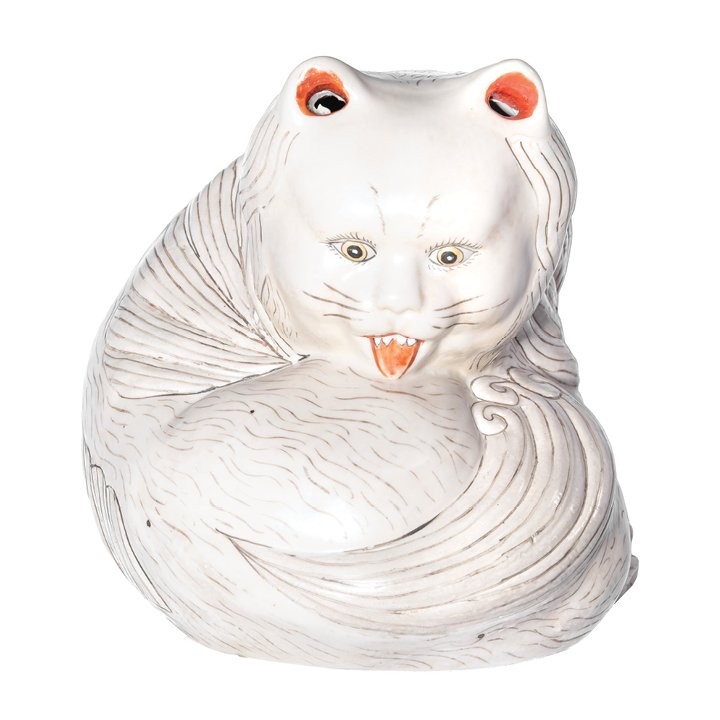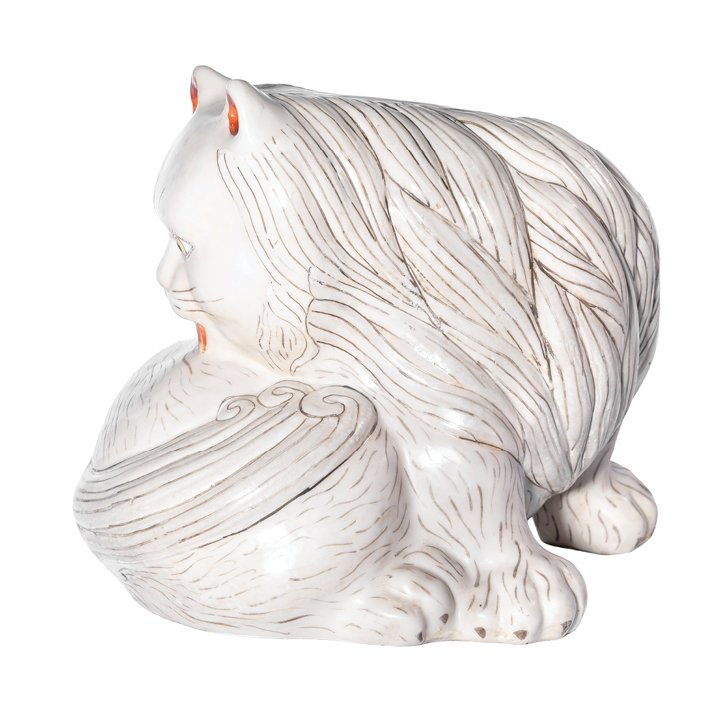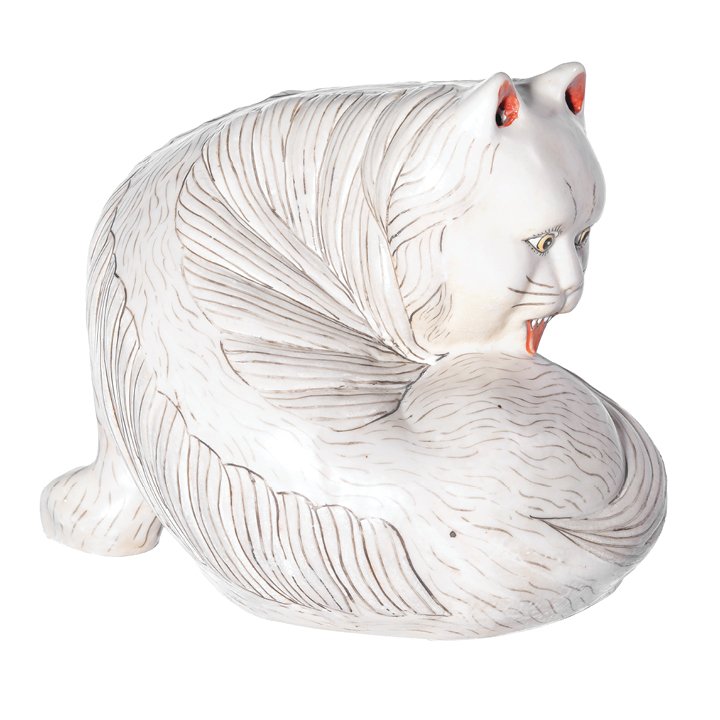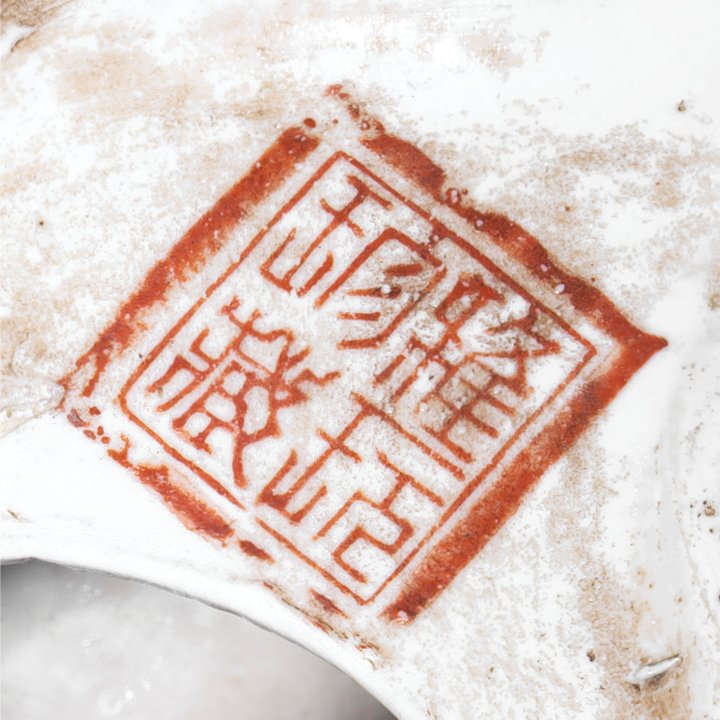-
Delivery:1 to 5 days within the UAE, depending on the size of the object and the location to be delivered to.
-
Available For Home ViewingsSchedule a viewing to see this piece in your homeSchedule Viewing Find Out More
-
Online Exclusive:This item is located in our warehouse at the moment. Please contact us for purchase or to schedule a home viewing.
About
A large Chinese porcelain figure of a cat, modeled in the round and shown turning to lick its back. The surface is covered in a translucent white glaze with incised lines suggesting fur, and the facial details are painted in iron red and black. The base bears a red seal mark reading (Da Qing Qianlong Nian Zhi) – “Made during the Qianlong reign of the Great Qing Dynasty” – mark is commonly found on 19th-century and later reproductions paying homage to the Qianlong Emperor’s celebrated porcelain era (1736–1795). The workmanship and paste indicate it was produced in the late Qing period, likely mid- to late-19th century.
During that time, figural porcelains of animals such as cats, dogs, and bats were popular domestic ornaments and often carried symbolic meaning. The cat (mao) was associated with longevity and peaceful retirement, as its name is a homonym for the word “octogenarian” (mao). Representations of cats grooming or curling were considered auspicious and were sometimes presented as gifts to elders. This particular model blends humor with craftsmanship, the influence of Jingdezhen (Jiangxi Province) workshops.
-
CreatorJiang Xi Province
-
DimensionsH 18 cm x Dia 20 cm (approx)
-
Weight2 kg
-
Place of originChina
-
ConditionExcellentPackageCOC Box/Bag
-
Period / DateLate 19th Century
-
Materials & TechniquesPorcelain - Hand-Painted
























